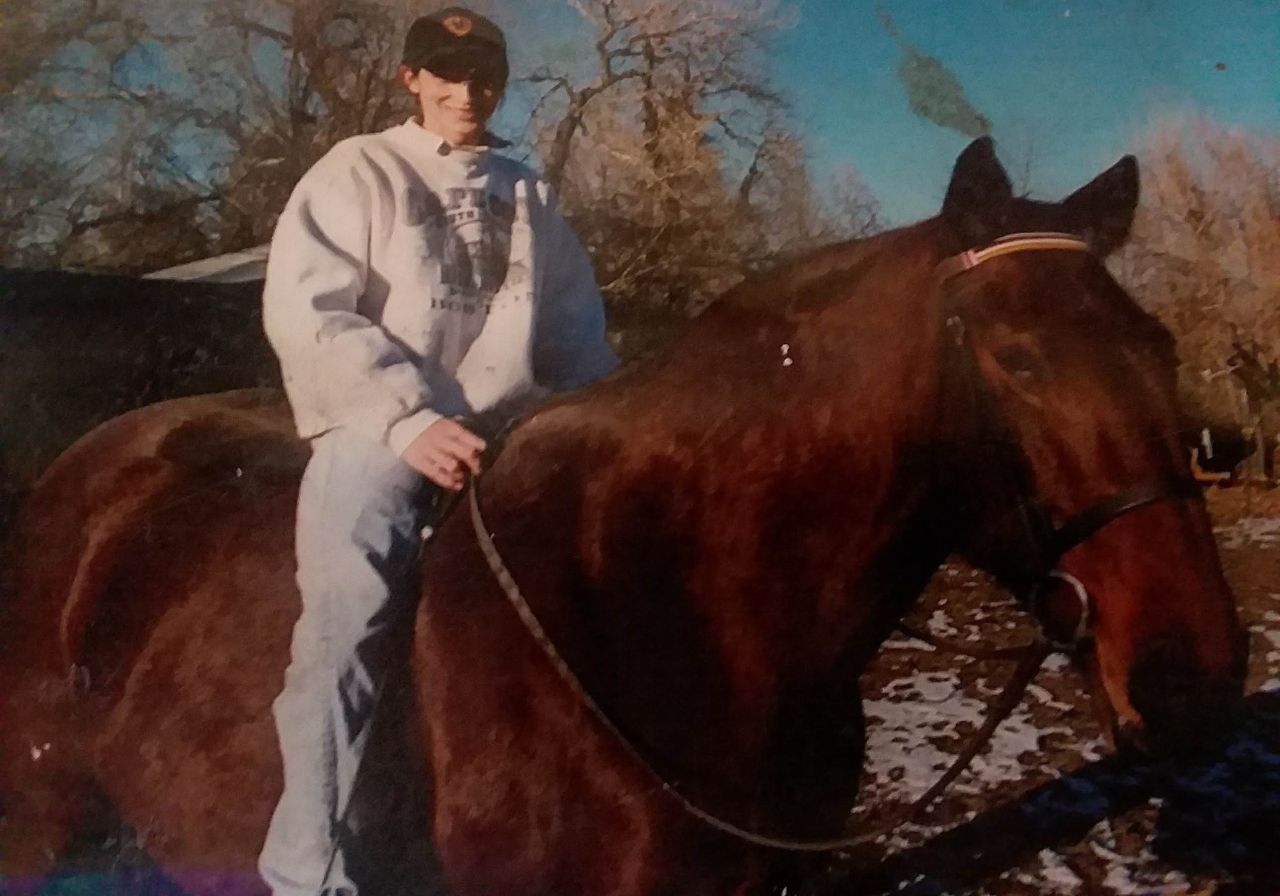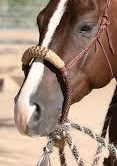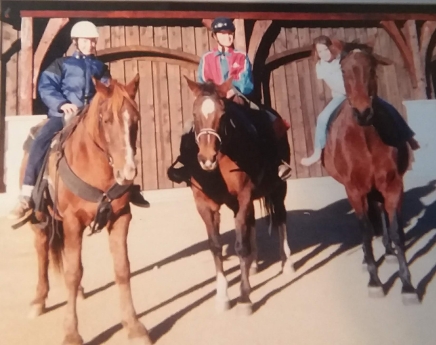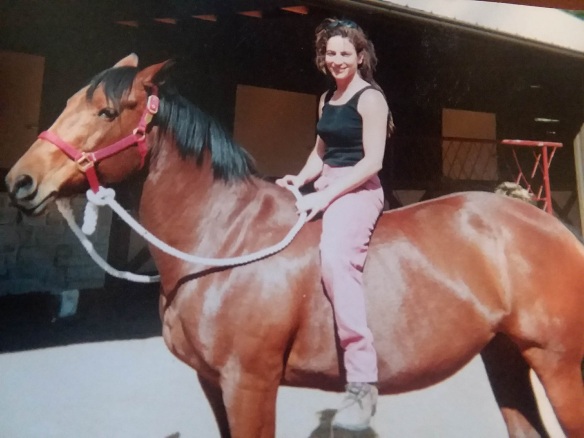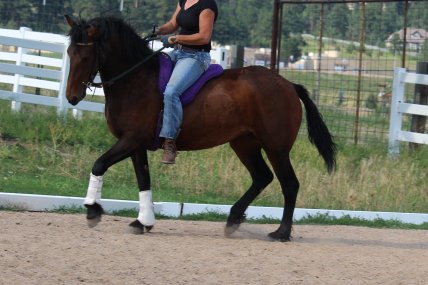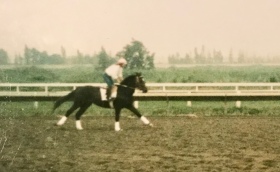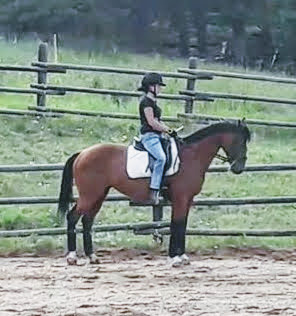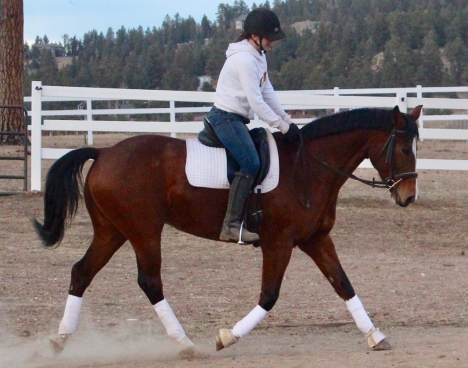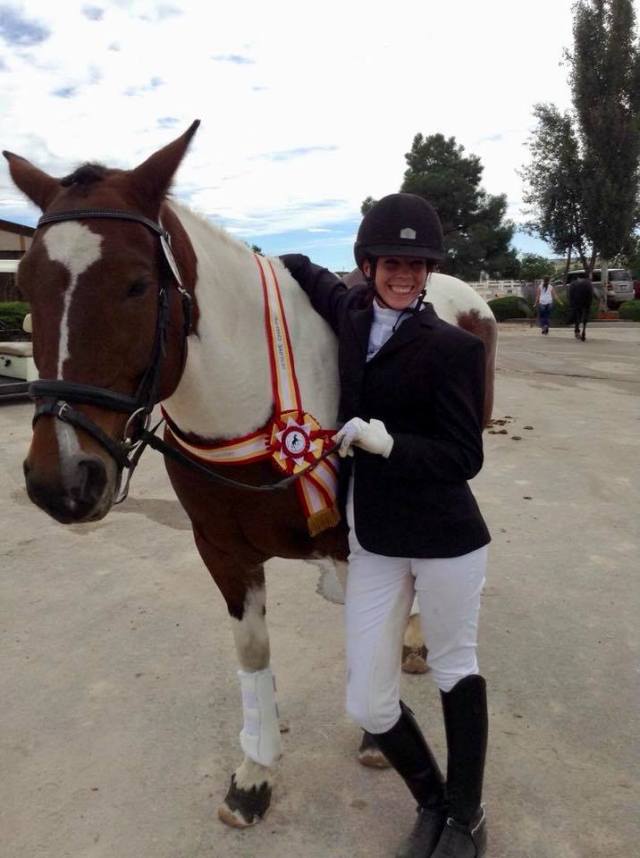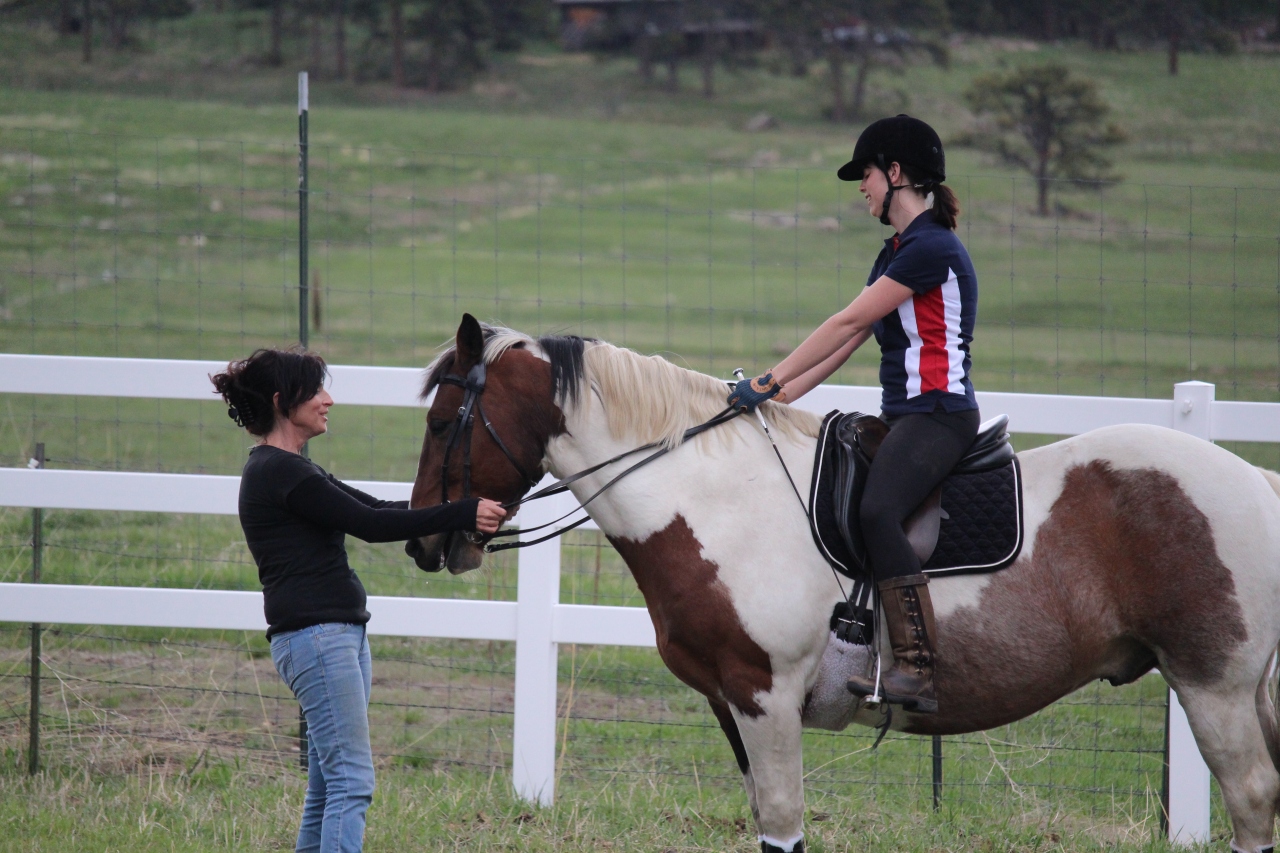We love our horses, we want the very best for them, and we are willing to try anything to have a great partnership with them. My same story, different blog.. I am so passionate about helping horses, almost to a fault. I become very sensitive to the way they are ridden, handled, and cared for. We can’t all be like Charlotte Dujardin, Carl Hester or Ray Hunt, but we can try for that picture of harmony. When I was learning to ride at the age of nine, my instructor had me read a book that I will never forget. “Smokey the cow horse ” it is a horse telling his own story of being born in the wild. He tells his survival story of being born on the range, and human experiences of training. I think it planted a seed in me at a young age to always try to view the horses perception of things. I hope to offer horse owners a deeper level of thinking and education . When our horses portray an unwanted behavior, it is usually that they are attempting to communicate a problem to us. We can create a superficial view that makes us feel better about the problem or we can address the issue straight on. What you believe is helping your horse may actually be enabling the behavior that will only show up in a different form, sooner than later.
Let me give a few examples of what I am referring to, you will find the educational solutions numbered further in the blog:
1.) Problem: Horse does not like ears touched.
Simple solution: I have a special bridle to accommodate and I don’t ever touch the ears.
2.) Problem: Horse does not like bits.
Simple solution: I ride with a bit less bridle.
3.) Problem: My horse pulls back when tied, does not tolerate grooming or tacking up.
Simple solution: I tie with a slip ring or a bungee.
4.) Problem: Horse won’t respond to leg, is lazy and stubborn.
Simple solution: I wear spurs.
5.) Problem: Horse braces and pushes against bit, fights all bit pressure by tossing head.
Simple solution: I use a gadget designed to place head in a ” frame. ”
When viewing this list, it is easy to see why I chose the word superficial for addressing the issues. Now, to gain a deeper level of knowledge regarding behavior, read on..
I continually teach about the horses shutting down emotionally. This shutting down is a protective mode that begins to have an effect on the nervous system which in time begins to appear physically. Usually it will show up in the muscular system of the body. Muscles may feel tense, tight, trembling to any touch, and hard. A scientific study called the Defense Cascade proves the protective shut down effects on humans as well as mammals. Shutting down the emotions to endure stresssful situations, shows muscle shut down as well. “ Emotions are played out mentally and physically, it is a defense mechanism. We can’t always compare horses emotions to humans but if we are training with empathy, we can believe our survival instincts are very similar. This is proven with horses used in the healing process of victims of trauma and abuse. It is a connection that creates an unexplainable bond to both horse and human.
Here is the link to study more about the Defense cascade https://www.ncbi.nlm.nih.gov/pmc/articles/PMC4495877/
Some of the signs of emotional shut down are horse is irritable with grooming, tacking up, or when you pet them in a particular area, they react as if they had no idea you were there. Some horses just don’t like to be coddled and that is their character. They are all business..”either ride me or leave me alone ” It is up to us as horse owners to really get to know the character of our horses. Then we can recognize immediately if something isn’t right.
What does this shutting down have to do with behavior?
1.) If a horse does not want the ears touched, ask your veterinarian to look into the ears. If all is ok, then it will be important for you to slowly apply Ttouch methods to the ears, it is a desensitizing, awareness process that starts at the base of the ear. 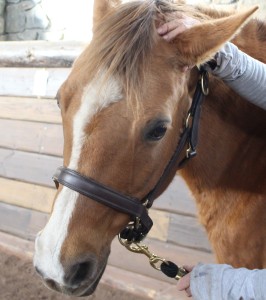 Horses that have had barbaric methods done to them like an ear twitch may have damaged nerves. You need to address this and be able to touch the ears, promoting feeling and awareness. We don’t want the horse ” shut down ” in any areas of their body. Dr. Monica Aleman, associate professor and internal medicine specialist at the University of California-Davis, is one of the few researchers who focuses on the equine ear. “[Head-shyness] could start with something painful and then become a learned behavior, even when the problem is solved, that behavior could be tricky to get rid of,” Aleman said. “You can begin by touching the horse on the neck and then slowly touching closer and closer to his ears, each time giving him a piece of carrot or a lump of sugar. Then he is likely to be less sensitive about his ears,” Meanwhile, if it’s always a battle to put his bridle on, you can undo the headstall, put it on, and then buckle the cheek strap instead of pulling it over his head.” -Excerpt from paulick report. Accommodate the horse through the process but also address the problem.
Horses that have had barbaric methods done to them like an ear twitch may have damaged nerves. You need to address this and be able to touch the ears, promoting feeling and awareness. We don’t want the horse ” shut down ” in any areas of their body. Dr. Monica Aleman, associate professor and internal medicine specialist at the University of California-Davis, is one of the few researchers who focuses on the equine ear. “[Head-shyness] could start with something painful and then become a learned behavior, even when the problem is solved, that behavior could be tricky to get rid of,” Aleman said. “You can begin by touching the horse on the neck and then slowly touching closer and closer to his ears, each time giving him a piece of carrot or a lump of sugar. Then he is likely to be less sensitive about his ears,” Meanwhile, if it’s always a battle to put his bridle on, you can undo the headstall, put it on, and then buckle the cheek strap instead of pulling it over his head.” -Excerpt from paulick report. Accommodate the horse through the process but also address the problem.
2.) I am not against bit less riding, it is a great testimony of control and partnership. I am against bit less riders claiming bits are harsh and barbaric. Bits are definitely misused in several ways, but so is our understanding of what the consequences are by forcing our horse in a position.” Force without a bit is still force. Taking the bit out of the mouth of the horse does not make it any friendlier if one replaces it by a bridle which can easily hurt the horse’s nose or other parts of the sensitive face.

Holding bit less rein until the horse gives to pressure inflicts pain on facial nerves.

You don’t have to know anything about horses to see this is unnatural. The kinematic abnormality is noticeable with the wrong footsteps
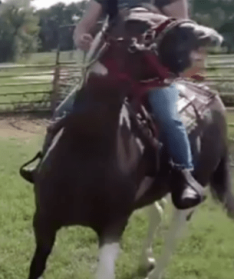
This horse looks super unhappy with the bit less bridle. The nose and poll pressure can be just as harsh on facial nerves as a bit can be in harsh hands.
Anyone that studies and understands the bio mechanics of the horse knows that the bit is not there to gain harsh power over the horse, it is there to feel the horses body. The bit can tell you where the horse is braced and needs correct flexion. When used correctly, the bit creates proper flexion throughout the entire body. The horse always appears happier without a bit in it’s mouth because they can carry their body the way they want to. That’s a good thing right? No it is not, horses were not born understanding how to balance under a rider. This is obtained by a training of different gymnastic exercises to create a correct, light, and balanced horse. The way a knowledgeable trainer gets them quiet in the mouth is by improving their balance. The better they do with their movement the more they become quiet and content in the mouth.

This horse easily performs a half pass at the walk with reins in one hand and no bit pressure. He is being trained to self carriage.
” You are therefore losing the precision associated with the bit. The bottom line is the rider. Pulling and tension of the forearms and elbows and shoulders are the cause of eventual discomfort for the horse, not the bit. This is where the hypocrisy of the bit less came from. Instead of learning how to ride and don’t pull on the reins and therefore don’t “Take” contact, riders felt good about themselves removing the bit. Of course, it is worse for the horse. Contact on skin and bone and facial nerve is a lot worse than gentle pressure on the tongue.” _ Jean Luc Cornille
We are all entitled to an opinion but re educating horses that have been improperly trained, abused, or endured trauma is serious business. The best approach is with thorough knowledge and understanding of exactly how the horses physique works, then after creating self carriage and balance in the horse, go bit less, bridle less, whatever gives you and your horse joy! You will want to periodically check in with a simple snaffle to address any improper bending, bracing, etc.
3.) The horse that pulls back when tied is apprehensive about what will happen, they are trying to communicate something, you need to address the discomfort and then train them to properly stand.  The bungee gives them freedom to pull back, it accomodates the behavior that is very dangerous. For simple training methods on training to tie, I would suggest reading Mary Twelveponies there are no problem horses, only problem riders.
The bungee gives them freedom to pull back, it accomodates the behavior that is very dangerous. For simple training methods on training to tie, I would suggest reading Mary Twelveponies there are no problem horses, only problem riders.
4.) Spurs for the unresponsive horse. Horses do not become more responsive with the shouts of spurs and kicking, this actually creates a deadened response after time. Horses have in the area under your legs a very high tactile perception, by kicking with your heels or even spurs, you overload their perception forcing horses into protective reflex contraction. “Using stimuli developed for gauging human tactile sensitivity, we were surprised to find that horse sensitivity on the part of the horse body which would be in contact with the rider’s leg is greater than what has been found for the adult human calf or even the more sensitive human fingertip. Horses can react to pressures that are too light for the human to feel.” (Saslow, 2002) – Excerpt from Science of Motion Chazot 88
5.) I have already overly spoken about the use of gadgets to get false results. Once again what we think and believe are solving problems, are actually enabling disastrous results both physically and mentally.
When problems arise, the horse needs to be assessed by a Veterinarian, if all is clear medically, then analyze at a muscular level. Ttouch methods unblock tenseness using gentle yet firm pressure on specific points. In the absence of pain, muscles relax and blood flows more freely. As tension recedes, the body finds balance. Areas of tightness that exist in a horse’s body may be obvious and create abnormal gait movement. Tension in muscles will have an effect on the way the horse functions on an emotional, mental and physical level and can interfere with their ability to be trained and ridden. On the other hand, releasing muscle tension without addressing the root cause can be harmful. Horses and humans use muscle compensations to protect themselves from pain, motion therapy finds the root cause and then re creates proper muscle development. This works like physical therapy.

” The thoughts we choose to think are the tools we use to paint the canvas of our lives. ” – Quote by Louise Hay


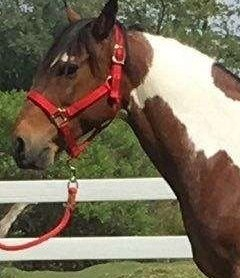
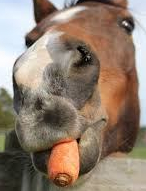

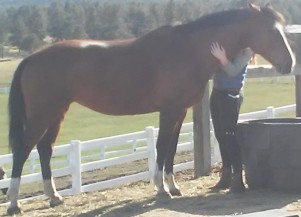 He will breathe out and begin to gently chew. These relaxed signs can appear but the tail may still be rigid and clamped.
He will breathe out and begin to gently chew. These relaxed signs can appear but the tail may still be rigid and clamped. as they are gentler. In some cases, the horse is less fearful of approaching with the rope than wrapping him with a polo wrap. After some hopping and kicking, he settled. He was just scared and kicking out in defense. His ears were not pinned but his tail was clamped. All “problem ” horses have to be handled differently and that is why no” how to” book can address the situation. I taught the owner the Ttouch so she could work with him 10 to 20 minutes per day. He soon became relaxed and accepting and I was able to start him under saddle. Chasing a horse in a round pen until he ” relaxes ” does not work in cases of pain and emotion, it seems to but is actually creating a stronger mental shutdown. This is different than acceptance or accustoming to tack and surroundings. I have seen many horses leap right out of a round pen in fear and confusion. Horses like this need routine and consistency of ” awareness “in order to change their defensive nature to a trusting, willing character. This pony was able to change because of his owners willingness to learn, to have faith in what I was doing and allowing the time needed to gain his trust.
as they are gentler. In some cases, the horse is less fearful of approaching with the rope than wrapping him with a polo wrap. After some hopping and kicking, he settled. He was just scared and kicking out in defense. His ears were not pinned but his tail was clamped. All “problem ” horses have to be handled differently and that is why no” how to” book can address the situation. I taught the owner the Ttouch so she could work with him 10 to 20 minutes per day. He soon became relaxed and accepting and I was able to start him under saddle. Chasing a horse in a round pen until he ” relaxes ” does not work in cases of pain and emotion, it seems to but is actually creating a stronger mental shutdown. This is different than acceptance or accustoming to tack and surroundings. I have seen many horses leap right out of a round pen in fear and confusion. Horses like this need routine and consistency of ” awareness “in order to change their defensive nature to a trusting, willing character. This pony was able to change because of his owners willingness to learn, to have faith in what I was doing and allowing the time needed to gain his trust.